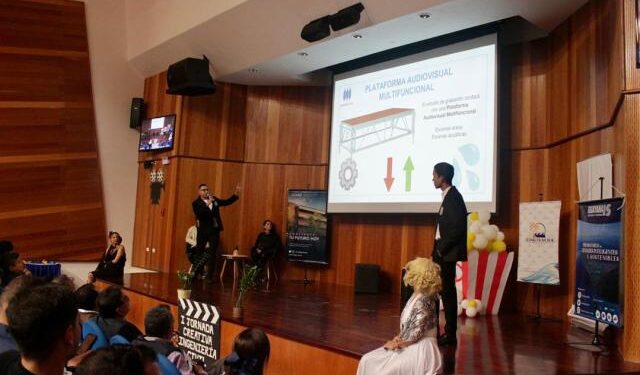Galpón Project, an initiative to convert industrial spaces into audiovisual recording sets in Ciudad Guayana, southern Venezuela
The ‘Galpón Project’ (Shed, Industrial Steel Building) seeks to take advantage of the potential of youth trained at the Universidad Católica Andrés Bello (UCAB), Universidad Bicentenaria de Aragua (UBA) and Universidad Nacional Experimental de las Artes (UNEARTE) by creating audiovisual production spaces and sets in abandoned industrial warehouses.
By Pableysa Ostos/Correspondent lapatilla.com
According to information collected by project participants in Ciudad Guayana, there are five perfectly usable industrial parks.
The Civil Engineering students, Víctor Goitia and Ángel Lameda, made a characterization of these spaces.
In the case of Puerto Ordaz, there is the Los Pinos Industrial Park, which has an area of 180 hectares and 340 warehouses, as they managed to quantify at the end of 2023. While in Unare there are 93 hectares and 200 warehouses. By 2020, in Matanzas there were 100 industrial buildings in an area of 225 hectares. In UD-321, last year there were 150 industrial steel buildings on 83 hectares, and in Chirica, San Félix, 65 sheds were located on 112 hectares.
Professor Karla Pravia and Lila Parra, who is part of the team that leads Proyecto Galpón, pointed out that they are betting on the possibility of Guayana’s potential, from a geographical point of view, but also as a source of human talent.
Pravia added that on her networks she began to talk about the Orange Economy, the Creative Film Industry and how profitable it is to make films in Ciudad Guayana, which has a lot of human talent and physical spaces for audiovisual recordings.
“Omar Martínez and Humberto Galvis from the Intelligent and Sustainable Guayana Foundation read it, met, and the Guayana IS Foundation proceeded to promote what is known as the Galpón Project,” she said.
Adding efforts
The Shed Project is a growing idea that emerged to change the use we know of the warehouses and industrial spaces in Ciudad Guayana. “It is promoted to think about a prospective for Ciudad Guayana aimed at the search for innovation opportunities for infrastructure and industrial equipment, towards an orange economy.”
The students of the School of Civil Engineering of the UCAB-Guayana accompanied by one of their professors and together with the students of the other schools of Engineering and Social Communication, motivated by the ‘Fundación Guayana Inteligente y Sostenible’ (who are the owners of the prospective and original idea) and other organizations in the tourism and recreation areas of the region, took the information and knowledge acquired during their years of schooling at the university and applied it in a technical and practical way to prepare during the semester the organization of the I Creative Day of Civil Engineering 2024.
“The Civil Engineering students, applying their studies in urban planning and buildings, were able to structure and design what was necessary to bring this project closer and closer to reality. The aim is to take advantage of the enormous potential of these spaces and the natural beauties of Ciudad Guayana for audiovisual and cinematographic use,” explained Professor Parra.
Project objectives
The main objectives of the Shed Project:
1. Adapt the use of the industrial warehouses and buildings of small and medium-sized industries that provided services and support to Guayana’s basic companies towards the production of the creative film industry.
2. Use the natural beauties of Ciudad Guayana as locations for audiovisual recordings that enhance the economic recovery of the people of Guayana.
“The center of the university is just outside this area and by promoting this initiative, it manages to spread the sense of belonging of the Guyanese towards their city, stimulating the practical application of knowledge in the construction of a modern, intelligent, viable and sustainable city, full of socioeconomic opportunities,” Pravia explained.
When asked about execution time and schedule, Professor Karla Pravia highlighted that like any project, several stages must be completed after the idea for this perspective has been disseminated. In the short term comes the management preparation of the preliminary project, where the business model must be established.
“Starting from this, new alliances will be achieved that will allow strategies to be designed to carry out the project itself, and consolidate it with the execution of audiovisual recordings that will grow for the socioeconomic, cultural and tourist benefit of the city and its inhabitants. In the medium and long term, the goal is to build an Intelligent and Sustainable Guayana City that will be the home of future generations to infinity and beyond,” he pointed out.
For more information you can consult Professor Parra through her social networks on X, @profelps and on Instagram @ profelps_16









